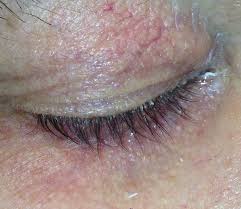Demodex Blepharitis Disease Overview:
Demodex Blepharitis Disease is a common yet often overlooked eye condition caused by the infestation of tiny mites called Demodex folliculorum and Demodex brevis. These microscopic parasites are naturally found on human skin, but an overpopulation can lead to various ocular issues, particularly affecting the eyelids. In this article, we will delve into the symptoms, diagnostic techniques, treatment options, the regulatory framework surrounding Demodex blepharitis, and the importance of clinical trials in assessing potential therapies.
The Market Competitors Listed Below are Revolutionizing Healthcare with Innovative Inventions:
Epilation and Microscopic Examination-
- Haag-Streit AG
- Enova Illumination
- E-Eye
- NIDEK CO., LTD.
In vivo Confocal Microscopy (IVCM)-
- Heidelberg Engineering
- Haag-Streit AGm
- Optovue Inc.
- Carl Zeiss Meditec AG
- Huvitz Co., Ltd.
Eyelid Examination-
- TearScience Inc.
- Optovue Inc.
- Heidelberg Engineering Inc.
- Tomey Corporation
- Konan Medical USA Inc.
- Keeler Ltd.
Symptoms of Demodex Blepharitis:
- Itchy and Irritated Eyes: Individuals with Demodex blepharitis often experience persistent itching and irritation in and around the eyes. This discomfort is primarily due to the mites feeding on skin cells and oils.
- Red and Swollen Eyelids: The presence of Demodex mites can cause inflammation, leading to redness and swelling of the eyelids. This can contribute to a gritty or burning sensation.
- Crustiness and Stickiness: Patients may notice crustiness or stickiness around the eyelashes, as Demodex mites secrete substances that can cause the eyelashes to become matted and the eyelids to stick together.
- Loss of Eyelashes: In severe cases, Demodex infestation may lead to the loss of eyelashes. This occurs when the mites damage the hair follicles, leading to weakened and fragile lashes.
Diagnostic Techniques:
- Clinical Examination: Ophthalmologists typically perform a thorough examination of the eyes and eyelids to identify characteristic signs of Demodex blepharitis, such as redness, swelling, and abnormal crust formation.
- Eyelash Sampling: The definitive diagnosis often involves collecting samples of eyelash debris and examining them under a microscope. This allows healthcare professionals to identify the presence of Demodex mites.
- In Vivo Confocal Microscopy: Advanced imaging techniques, such as in vivo confocal microscopy, may be employed to visualize the mites directly on the eyelids, aiding in a more accurate diagnosis.
Browse More Report:
https://www.diseaselandscape.com/environmental/demodex-blepharitis
Treatment Techniques:
- Topical Therapies: Topical treatments, including tea tree oil-based solutions and eyelid scrubs, are commonly used to eliminate Demodex mites and alleviate symptoms. These solutions should be applied carefully to avoid irritation.
- Antibiotics and Steroids: In some cases, doctors may prescribe topical antibiotics to reduce bacterial load and steroids to manage inflammation. However, these medications are typically used cautiously due to potential side effects.
- Maintaining Lid Hygiene: Educating patients about proper eyelid hygiene, including regular cleansing and avoiding the use of makeup and eye products that may exacerbate symptoms, is crucial for managing and preventing recurrences.
Regulatory Framework:
The regulatory landscape for Demodex blepharitis treatments is shaped by existing guidelines for ocular medications and medical devices. Regulatory bodies, such as the FDA in the United States, evaluate the safety and efficacy of new treatments before approving them for public use. Compliance with these regulations ensures that patients have access to effective and safe therapies.
Clinical Trial Assessment:
Clinical trials play a pivotal role in advancing our understanding of Demodex blepharitis and evaluating the effectiveness of emerging treatments. These trials involve rigorous testing on human subjects, aiming to establish the safety, dosage, and efficacy of new interventions. Participation in clinical trials allows patients to access cutting-edge treatments and contributes valuable data to the scientific community.
Conclusion:
Demodex blepharitis, though often underdiagnosed, can significantly impact ocular health. Recognizing the symptoms, employing accurate diagnostic techniques, and implementing appropriate treatments are essential steps in managing this condition. The ongoing research, guided by a robust regulatory framework and supported by clinical trials, continues to enhance our knowledge and provide new avenues for effective Demodex blepharitis management.
Browse Through More Environmental Diseases Research Reports.
Related Reports:
Confronting Solid Tumors: Understanding the Challenges and Solutions
Duchenne Muscular Dystrophy: The Battle for Strength and Hope
Bleeding Disorders Unveiled: Navigating the Challenges of Hemophilia
Spinal Muscular Atrophy (SMA): Unveiling the Road to Hope and Treatment


No comments yet